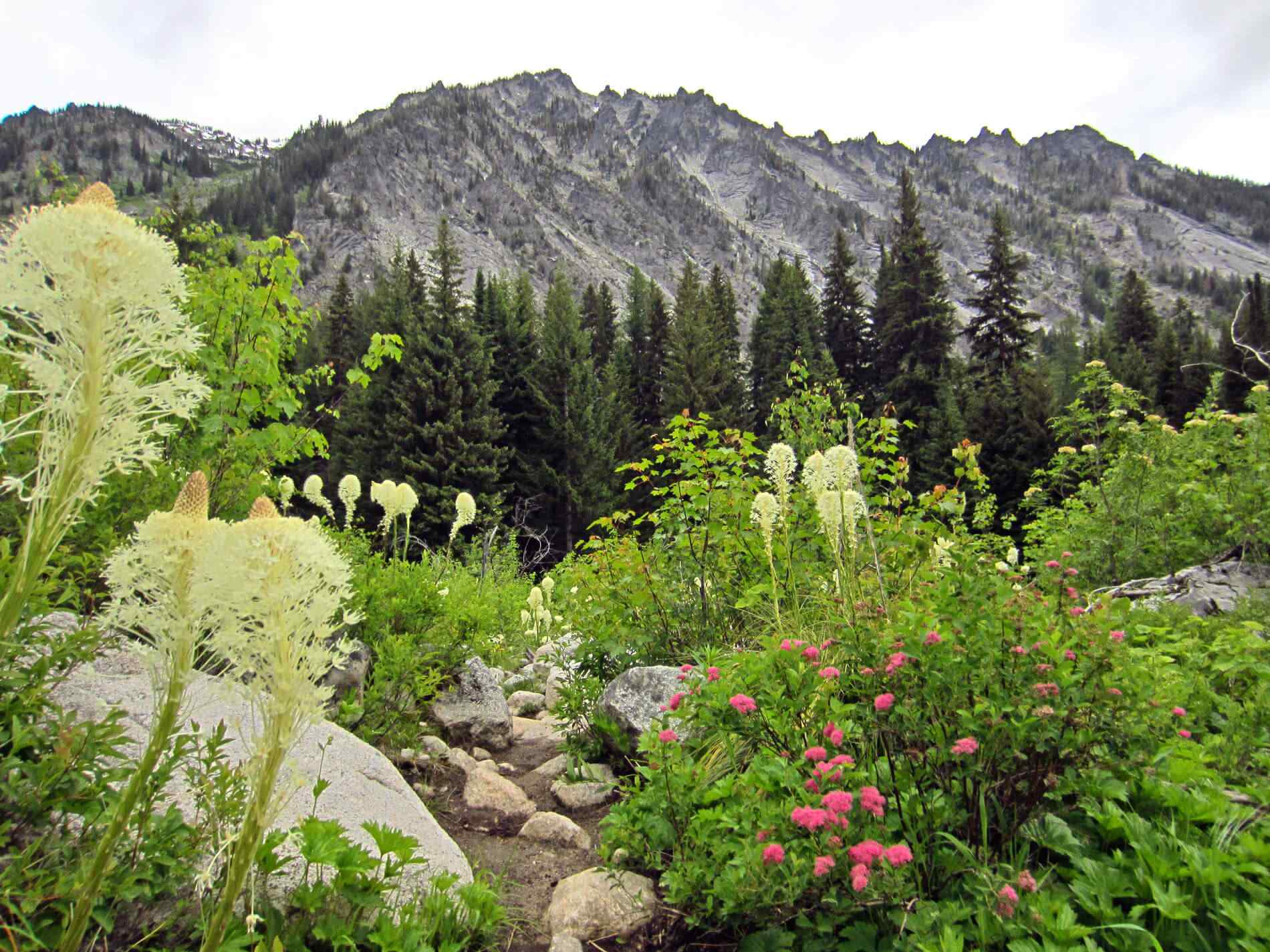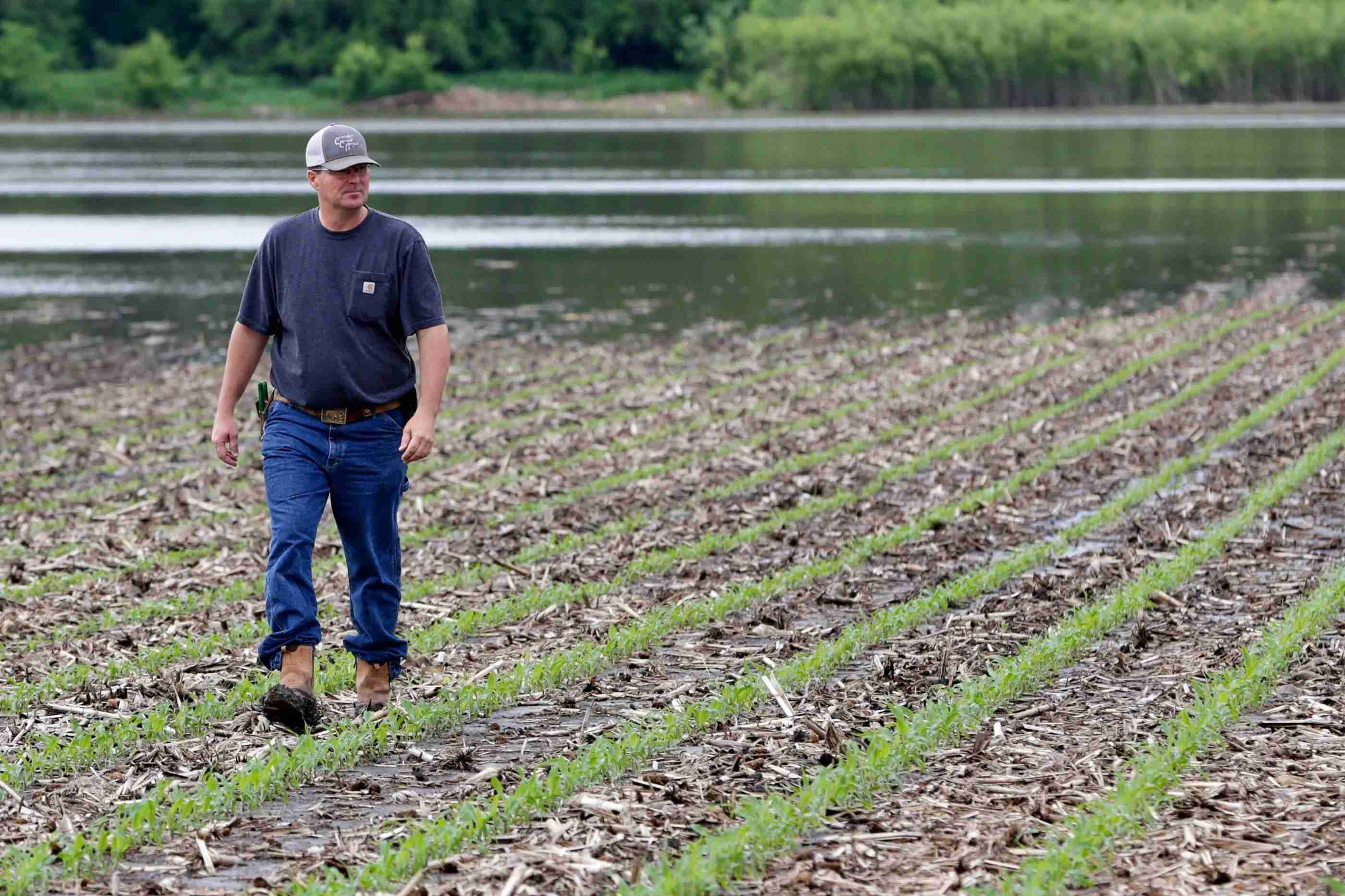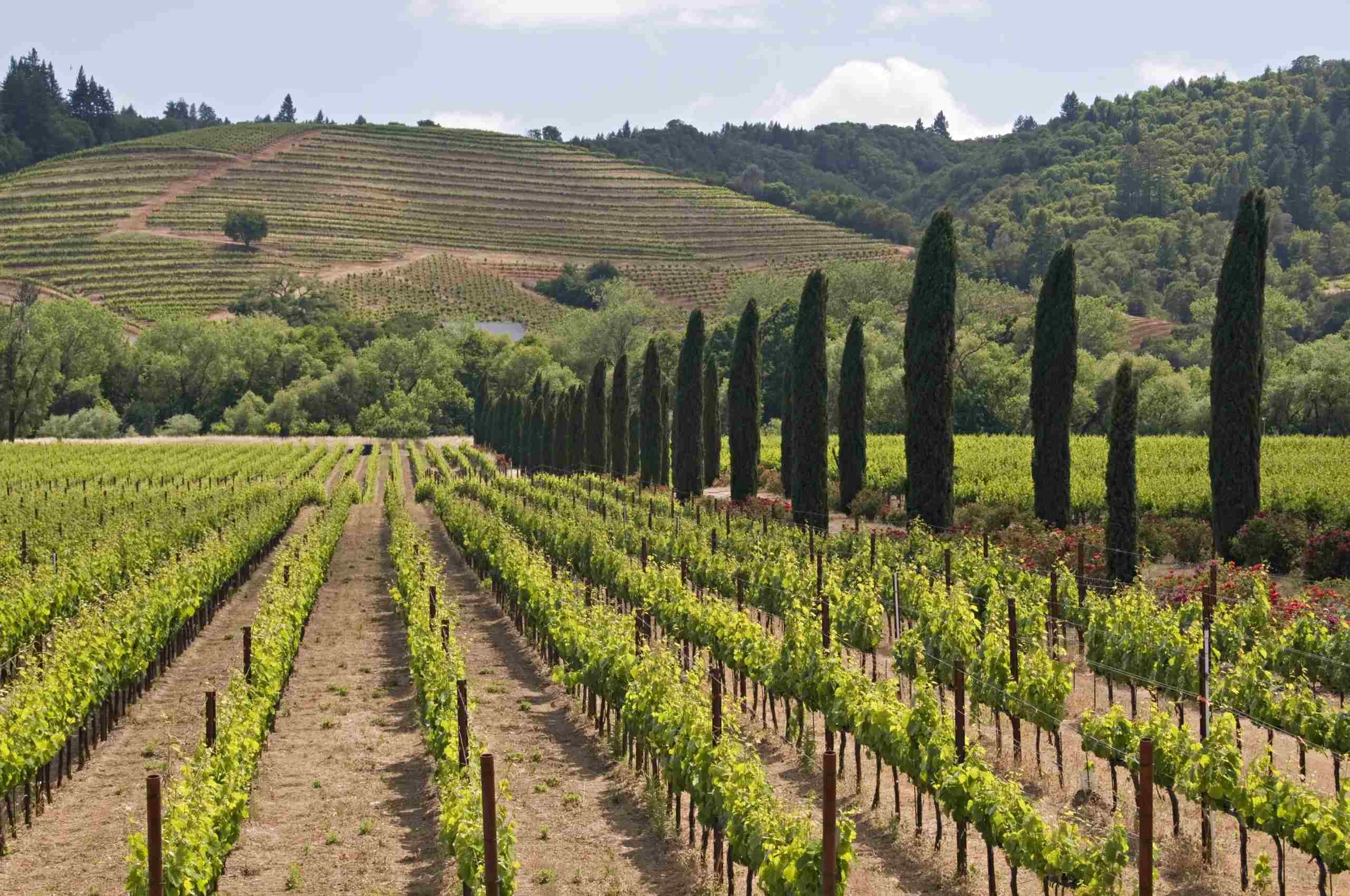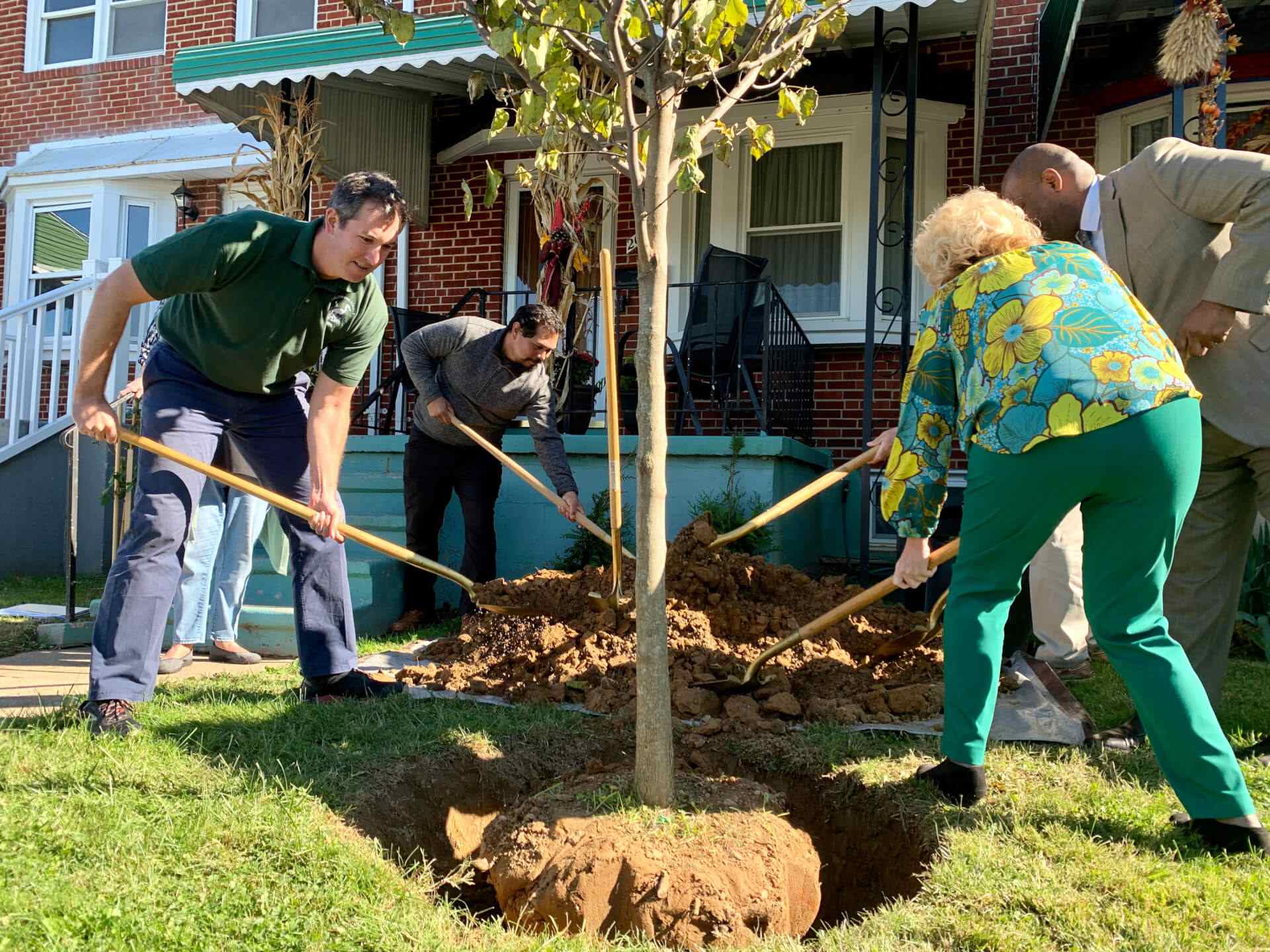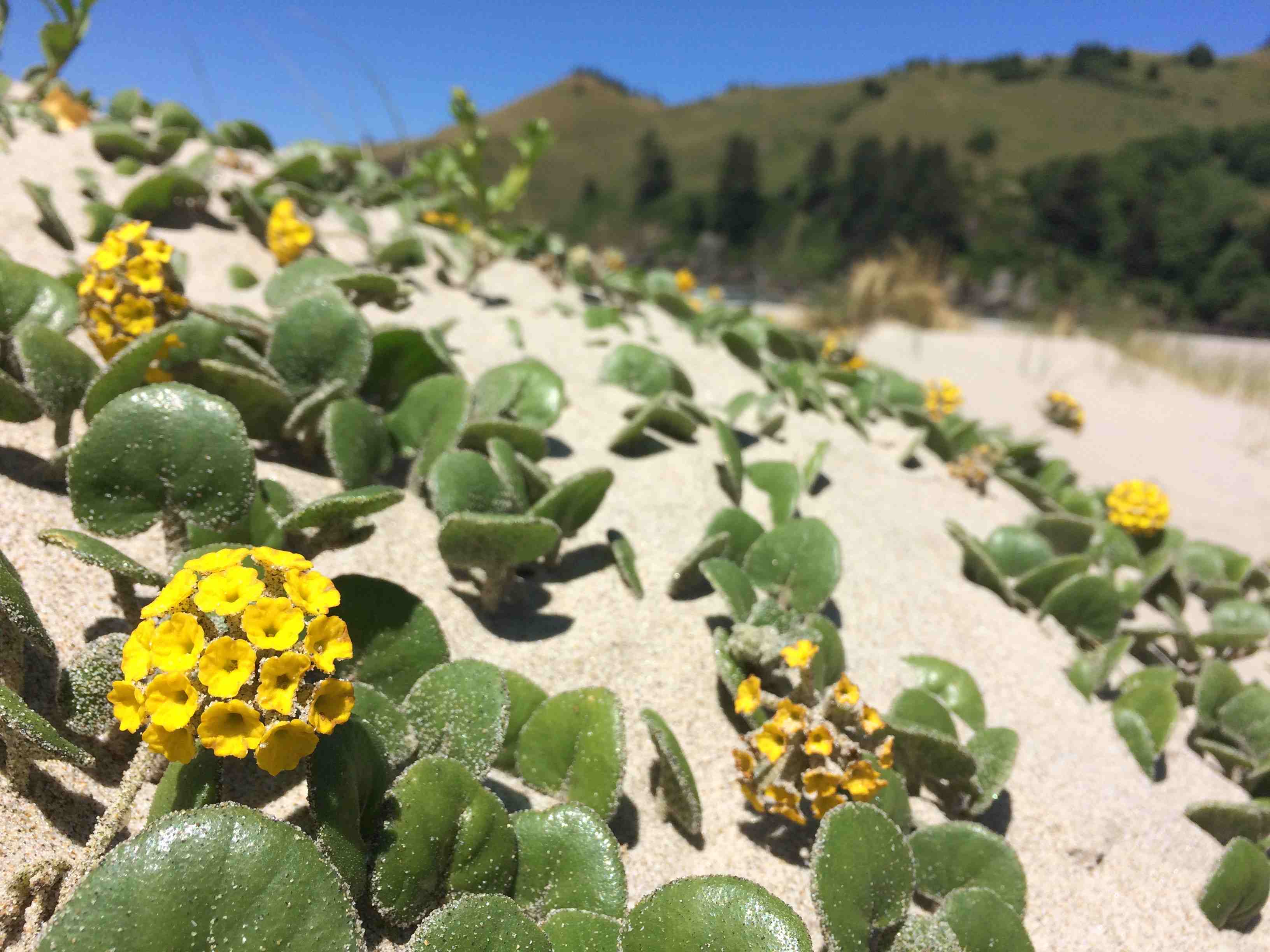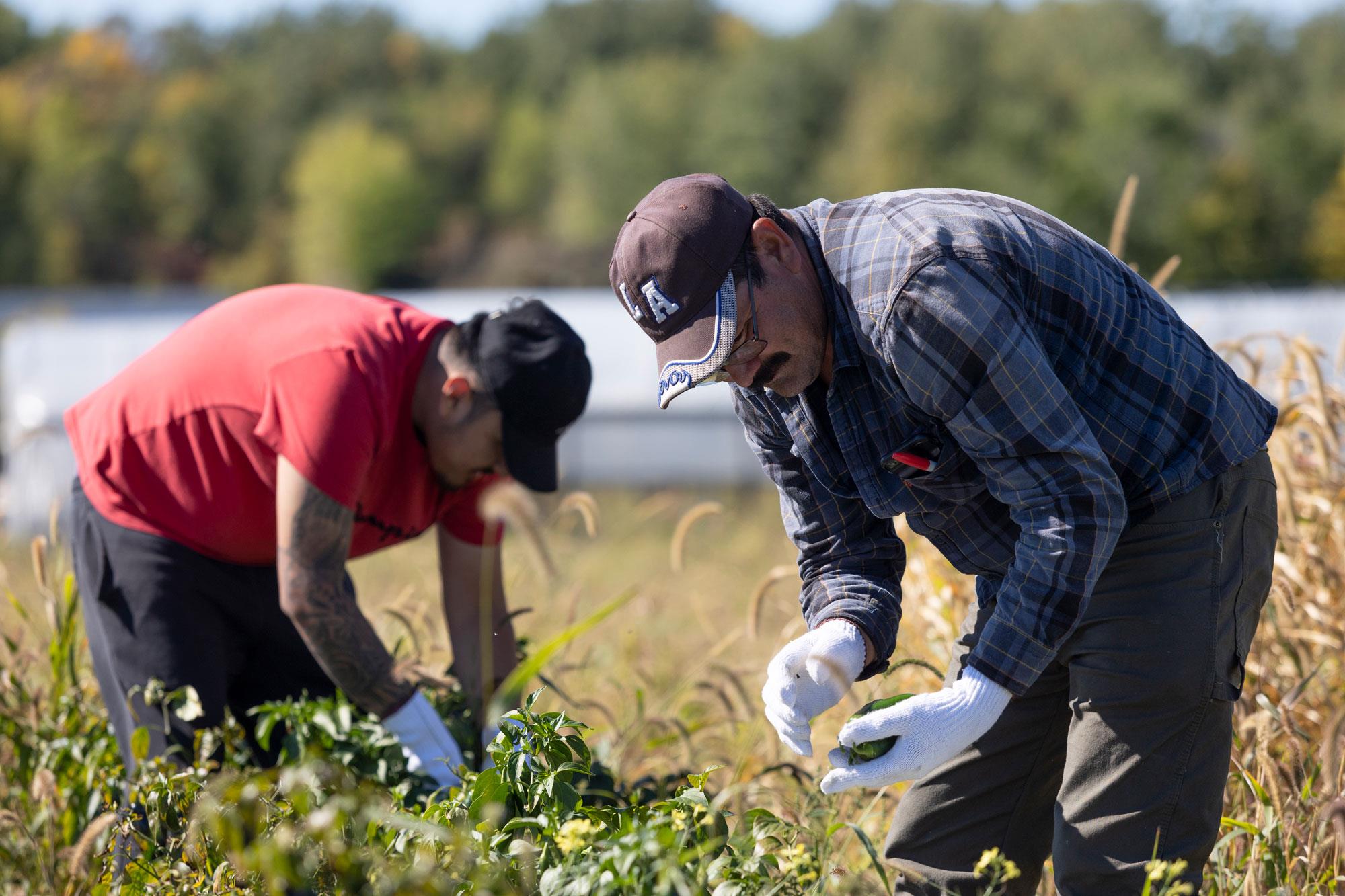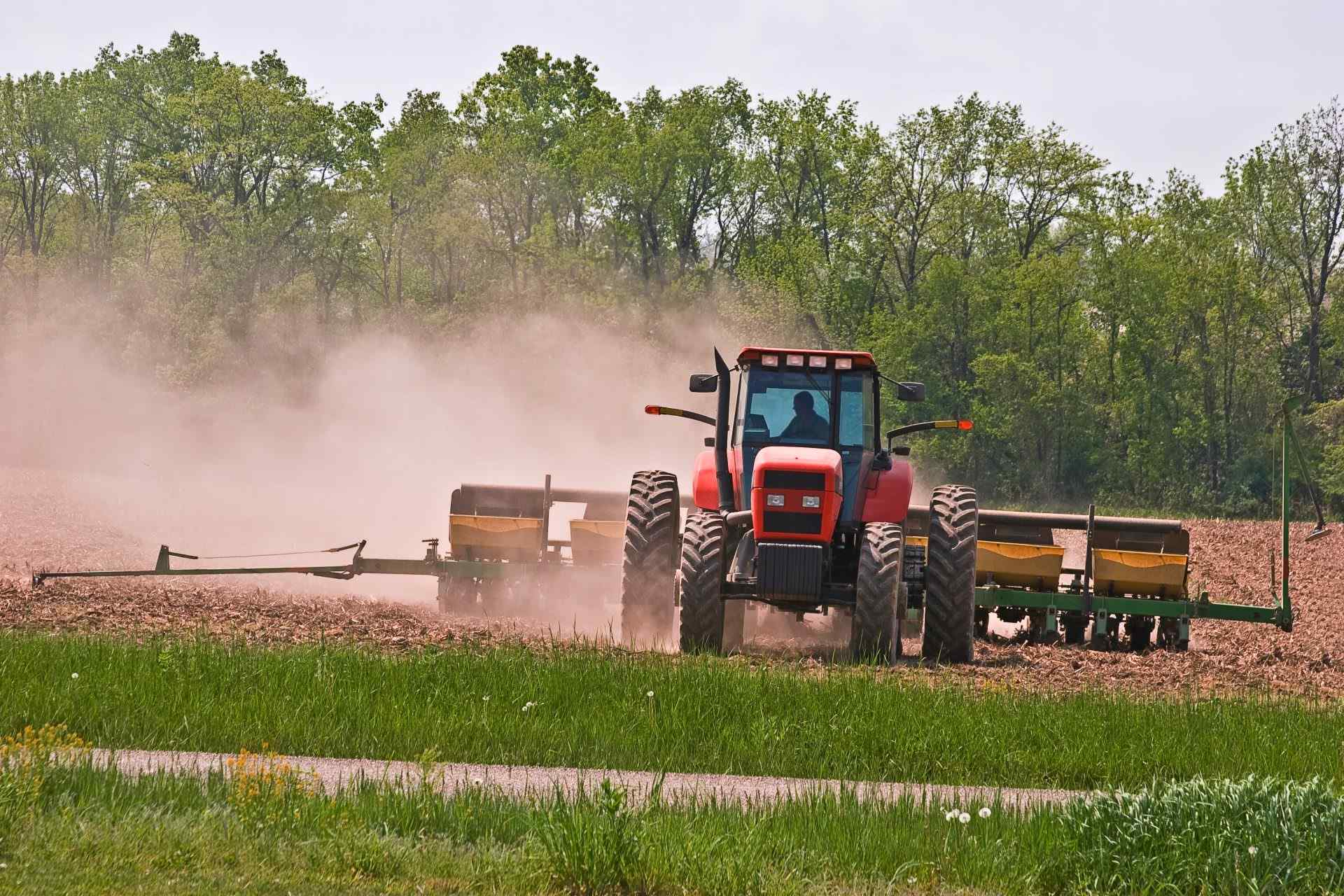Home>Gardening Basics>Understanding Soil>What Planting Zone Is Kingman, AZ
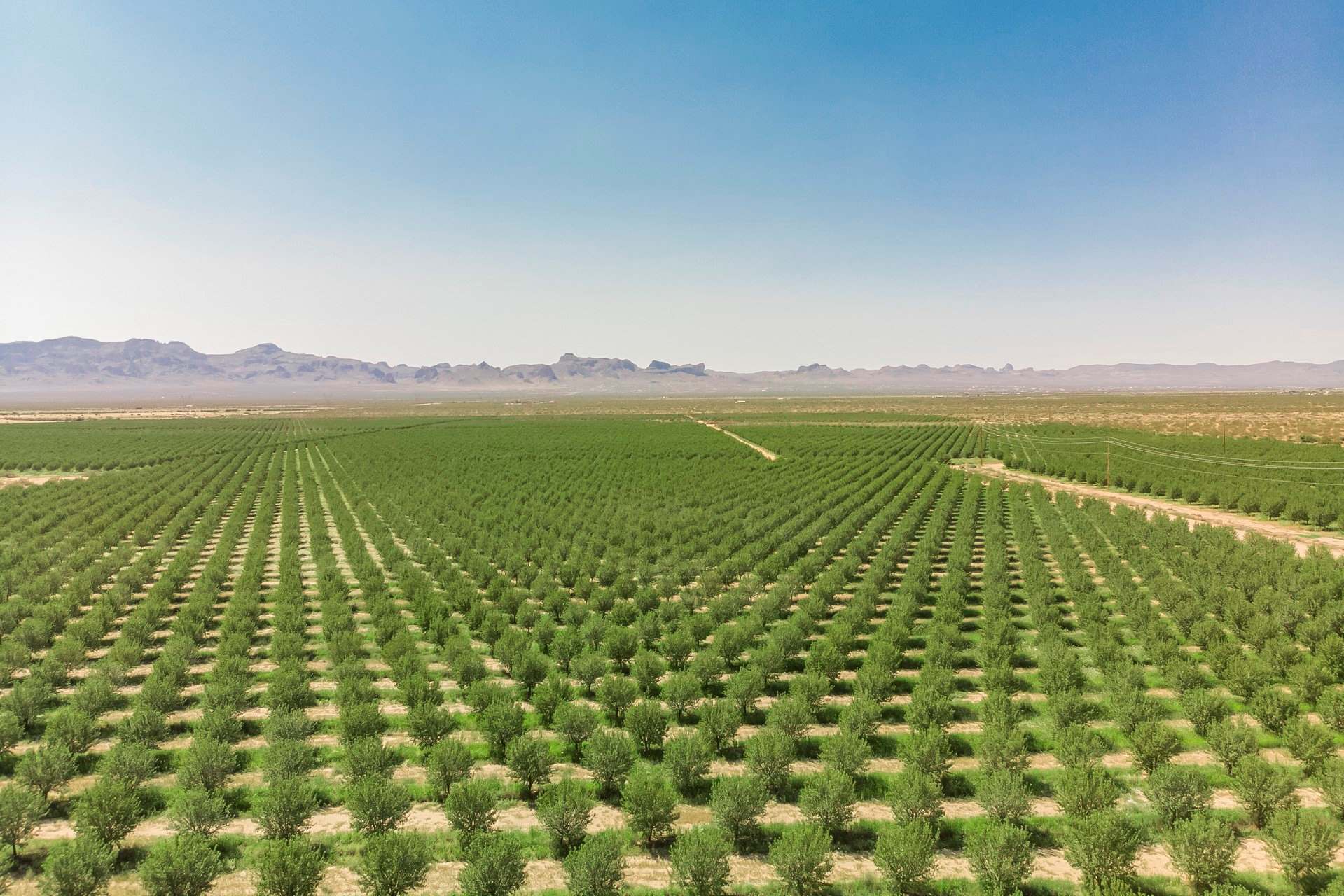

Understanding Soil
What Planting Zone Is Kingman, AZ
Modified: February 6, 2024
Find out what planting zone Kingman, AZ falls under and gain a better understanding of soil conditions in this region.
(Many of the links in this article redirect to a specific reviewed product. Your purchase of these products through affiliate links helps to generate commission for Chicagolandgardening.com, at no extra cost. Learn more)
Table of Contents
Introduction
Welcome to the fascinating world of soil! Understanding soil is crucial for anyone interested in gardening, farming, or land management. Soil serves as a vital foundation for plant growth, providing nutrients, water, and support. However, not all soils are created equal, and their properties vary depending on factors such as geology, climate, and human intervention.
In this article, we will explore the intricacies of soil and delve into its different components and characteristics. We’ll discuss the importance of soil health and how it affects plant growth and ecosystem sustainability. With a deeper understanding of soil, you’ll be able to make informed decisions about soil management and implement practices that optimize soil fertility and productivity.
We’ll also explore the importance of soil testing and how it can help identify nutrient deficiencies, pH imbalances, and other soil-related challenges. Additionally, we’ll examine various soil types commonly found in different regions and discuss their specific characteristics and suitability for different types of plants.
Whether you’re a seasoned gardener looking to improve your growing conditions or a novice embarking on your first planting venture, this article will equip you with the knowledge and tools to make the most out of your soil. So let’s get our hands dirty and explore the fascinating world of soil!
Understanding Planting Zones
When it comes to successful gardening, understanding planting zones is essential. Planting zones, also known as hardiness zones, provide valuable information about the climate conditions in specific regions and help gardeners determine which plants are most likely to thrive in their area. By knowing your planting zone, you can select plants that are well-adapted to the local climate, resulting in healthier and more productive gardens.
The concept of planting zones was developed by the United States Department of Agriculture (USDA) to categorize different areas based on their average annual minimum temperatures. The USDA Plant Hardiness Zone Map is the most widely used tool for determining planting zones in North America. It divides the continent into 13 zones, ranging from Zone 1 (coldest) to Zone 13 (warmest).
Each zone represents a 10°F difference in average minimum temperatures. For example, Zone 5 has an average minimum temperature range of -20°F to -10°F, while Zone 9 has a range of 20°F to 30°F. It’s important to note that these zones provide a general guideline, and other factors such as elevation, microclimates, and local geography can influence a specific area’s growing conditions.
Understanding your planting zone is crucial because it helps you choose plants that are suitable for your climate. Plants have different temperature tolerances, and selecting those that are suited to your zone increases their chances of survival and overall success in your garden. For example, if you live in Zone 4, you’ll need to choose plants that can withstand cold winter temperatures, while those in Zone 9 can focus on warm-weather crops.
Planting zone information is typically included on plant labels or seed packets, making it easy for gardeners to identify which plants are suitable for their region. Additionally, many online resources and gardening books provide planting zone maps and information to help gardeners make informed decisions about plant selection.
Now that we have a basic understanding of planting zones, let’s explore the specific planting zone for Kingman, AZ, and the factors that influence it.
The USDA Plant Hardiness Zone Map
The USDA Plant Hardiness Zone Map is a valuable tool for gardeners and farmers across the United States. Developed by the United States Department of Agriculture (USDA), this map provides a comprehensive guide to understanding the different climate conditions and temperature ranges in various regions. By using this map, gardeners can identify their specific planting zone and make informed decisions about which plants are most likely to thrive in their area.
The USDA Plant Hardiness Zone Map divides the country into 13 zones, ranging from Zone 1 (coldest) to Zone 13 (warmest). Each zone represents a 10°F difference in average annual minimum temperatures. The map is based on data collected over a 30-year period, providing a reliable reference for plant hardiness.
However, it’s important to note that the USDA Plant Hardiness Zone Map is not the only factor to consider when determining suitable plant choices. Other microclimatic conditions, such as elevation, proximity to bodies of water, and local geography, can also impact the specific climate within a zone and influence plant survival. Therefore, it’s always a good idea to consider these additional factors in conjunction with the USDA zone information.
The USDA Plant Hardiness Zone Map can be accessed online through the USDA website or through various gardening resources. The map is interactive, allowing users to input their ZIP code or location to identify their specific planting zone. Additionally, the map provides a color-coded visual representation, making it easy to grasp the temperature ranges for each zone.
Gardeners can use the USDA Plant Hardiness Zone Map to their advantage by selecting plants that are well-suited to their zone’s temperature range. For example, if you live in Zone 5, where the average minimum temperature ranges from -20°F to -10°F, you’ll want to choose plants that can withstand these cold temperatures. On the other hand, if you reside in Zone 9, where the average minimum temperature ranges from 20°F to 30°F, you’ll focus on selecting plants that thrive in warmer conditions.
By referring to the USDA Plant Hardiness Zone Map, you can save time, money, and effort in your gardening endeavors. Knowing your specific planting zone helps ensure that the plants you choose have the best chance for success and can withstand the specific climate conditions in your area.
Planting Zone for Kingman, AZ
Kingman, AZ, located in Mohave County, is situated in planting zone 8a according to the USDA Plant Hardiness Zone Map. This means that Kingman experiences average annual minimum temperatures ranging from 10°F to 15°F. Understanding this planting zone is essential for gardeners and farmers in the area, as it determines the types of plants that are most likely to thrive in Kingman’s climate conditions.
In zone 8a, gardeners in Kingman can expect hot summers and mild winters. With an average winter minimum temperature range that rarely drops below 10°F, this zone offers favorable conditions for a wide variety of plant species. However, it’s important to note that temperature extremes can still occur, and occasional frost or freezes may impact plant growth.
When selecting plants for a garden in Kingman’s planting zone, it’s crucial to choose those with a high heat tolerance. Drought-tolerant plants that can withstand periods of water scarcity are also a good choice, as Kingman experiences arid conditions. Native plants that have adapted to the local climate and soil conditions are often a wise option, as they are better equipped to thrive in Kingman’s ecosystem.
Some examples of plants that are well-suited for zone 8a in Kingman, AZ, include:
- Agave
- Yucca
- Desert Marigold
- Purple Sage
- Blackfoot Daisy
- Arizona Sunflower
Gardeners in Kingman’s planting zone can also explore varieties of fruit trees, such as peach, apricot, and pomegranate, which can withstand the region’s heat and arid conditions.
It’s important to consider other factors besides the planting zone when selecting plants for Kingman’s climate. Factors such as soil quality, exposure to sunlight, and available water resources should also be taken into account to ensure optimal growing conditions.
By understanding the specific planting zone for Kingman, AZ, gardeners and farmers can select plants that are well-adapted to the local climate and increase their chances of a successful harvest. So get ready to dig in and enjoy the beautiful array of plants that flourish in zone 8a in Kingman!
Factors Affecting Kingman’s Planting Zone
Several factors influence the specific planting zone for Kingman, AZ, and understanding these factors can help gardeners and farmers make informed decisions about plant selection and care. While the USDA Plant Hardiness Zone Map provides a general guideline, these additional factors play a crucial role in determining the specific microclimate within the region.
1. Elevation: Kingman’s elevation of around 3,500 to 4,000 feet above sea level affects its planting zone. Higher elevations experience cooler temperatures, which can impact the types of plants that can thrive in these areas. Gardeners in higher elevations of Kingman may need to select plants that are more cold-tolerant and can withstand lower temperatures.
2. Topography: Kingman’s diverse topography, including mountain ranges and valleys, can create microclimates within the region. Valleys and lowland areas may experience different temperature ranges compared to higher elevations. Therefore, gardeners should consider their specific location within Kingman and the local topography when choosing plants.
3. Sunlight Exposure: The amount of sunlight a garden receives can significantly impact plant growth and development. Factors such as the presence of nearby buildings, trees, or other structures can create shade and affect the amount of sunlight available to plants. Gardeners should evaluate the sun exposure in their specific garden area and select plants accordingly.
4. Soil Composition: The soil composition in Kingman varies, and different plants have unique soil requirements. Some areas may have sandy soil, while others may have clay or loam. Soil fertility, drainage, and nutrient levels also differ across the region. Conducting a soil test can provide valuable information about the soil’s pH level and nutrient content, allowing gardeners to amend the soil accordingly to create optimal growing conditions.
5. Water Availability: Kingman’s arid climate means water availability can be a significant factor in plant health. Periods of drought and limited water resources require gardeners to be mindful of water usage and select plants that are drought-tolerant. Watering practices, such as using drip irrigation or mulching, can help conserve water and maintain plant health.
Gardening in Kingman’s planting zone requires considering these various factors to ensure successful plant growth. By taking into account elevation, topography, sunlight exposure, soil composition, and water availability, gardeners can make informed decisions about plant selection and implement appropriate gardening practices.
Now that we’ve explored the factors affecting Kingman’s planting zone, let’s discover some native plants that are well-adapted to the region and offer a beautiful addition to your garden.
Native Plants for Kingman, AZ
Choosing native plants for your garden in Kingman, AZ, not only ensures they are well-suited to the local climate but also supports the biodiversity of the region. Native plants have evolved and adapted to the specific conditions of the area, making them more resilient and easier to maintain. Here are some native plants that thrive in Kingman’s planting zone 8a:
1. Agave: Agave is a popular choice in arid landscapes due to its ability to tolerate drought conditions. It features striking rosettes of fleshy, succulent leaves and produces tall spikes of flowers. 2. Yucca: Yucca is a unique desert plant that adds architectural interest to the landscape. It has long, sharp leaves and produces tall spikes of creamy white flowers. 3. Desert Marigold: Desert Marigold is a perennial with bright yellow flowers that bloom throughout the summer. It can withstand the hot, dry conditions of Kingman and adds vibrant color to any garden. 4. Purple Sage: Purple Sage, also known as Texas Ranger or Texas Sage, is a drought-tolerant shrub with aromatic gray-green leaves and stunning purple flowers. It attracts pollinators and adds a touch of beauty to the landscape. 5. Blackfoot Daisy: Blackfoot Daisy is a low-growing perennial that produces masses of white daisy-like flowers. It’s an excellent ground cover option for Kingman gardens and thrives in full sun. 6. Arizona Sunflower: Arizona Sunflower is a tall, showy perennial with bright yellow flowers that bloom in late spring and summer. It can withstand hot temperatures and attracts pollinators to the garden. These native plants not only have adapted to Kingman’s climate, but they also provide important food and habitat for native wildlife, including pollinators like bees and butterflies. Incorporating native plants into your garden helps support the local ecosystem and promotes biodiversity. When selecting native plants, consider the specific growing conditions in your garden, including soil type, sun exposure, and water availability. Native plants are typically low-maintenance once established but may benefit from occasional watering during prolonged dry spells. By including native plants in your Kingman garden, you can create a beautiful, resilient, and environmentally-friendly space that celebrates the unique beauty of the region.
Tips for Gardening in Kingman’s Planting Zone
Gardening in Kingman’s planting zone 8a comes with its own set of challenges and considerations. By following these tips, you can cultivate a thriving garden that thrives in the arid climate and specific conditions of the region:
1. Choose drought-tolerant plants: Select plants that are well-adapted to dry conditions and can withstand periods of water scarcity. Native plants, succulents, and Mediterranean plants are excellent choices for Kingman gardens. 2. Amend the soil: Kingman’s soil can be sandy or have clay-like properties, both of which can affect drainage and nutrient availability. Conduct a soil test to determine its pH level and nutrient content, and amend the soil with organic matter, such as compost, to improve its structure and fertility. 3. Mulch for moisture retention: Apply a layer of organic mulch, such as wood chips or straw, around plants to reduce evaporation and help retain moisture in the soil. Mulching also helps to suppress weeds and regulate soil temperature. 4. Implement efficient watering practices: Opt for drip irrigation or soaker hoses to deliver water directly to plant roots and minimize water loss through evaporation. Water deeply and infrequently to encourage deep root growth and drought tolerance in plants. 5. Practice water conservation: Collect rainwater in barrels or use greywater from household activities, following local regulations, to irrigate your garden. Avoid watering during the hottest parts of the day to reduce water loss through evaporation. 6. Provide shade and windbreaks: Protect sensitive plants from intense sun and wind by creating shade structures or planting windbreaks, such as trees or shrubs, around the garden. This helps to reduce water evaporation and provides a more favorable microclimate for plants. 7. Monitor and control pests: Regularly inspect your plants for signs of pests or diseases. Use organic pest control methods such as handpicking, introducing beneficial insects, or using natural insecticides when necessary. 8. Practice proper plant spacing: Give plants adequate space to promote airflow and reduce the risk of fungal diseases. Proper spacing also ensures that plants have enough room to grow and access sunlight. 9. Harvest and store rainwater: Install rain barrels or a rainwater harvesting system to collect and store rainwater for use in your garden. This helps reduce reliance on municipal water sources and conserves water. 10. Learn from local gardeners: Connect with fellow gardeners in the Kingman area to learn from their experiences and gain insights into gardening techniques specific to the region. Local gardening communities and online forums can be excellent resources for information and advice. By implementing these tips, you can create a beautiful and thriving garden in Kingman’s planting zone. Gardening in this arid climate may present challenges, but with proper planning, care, and attention, you can enjoy a successful and sustainable garden that thrives in the unique conditions of Kingman, AZ.
Conclusion
Understanding soil is the foundation for successful gardening and land management practices. By delving into the intricacies of soil composition, characteristics, and health, we can make informed decisions to optimize plant growth and ecosystem sustainability.
In this article, we explored the importance of understanding planting zones and how the USDA Plant Hardiness Zone Map serves as a valuable guide for gardeners across the United States. We specifically delved into the planting zone for Kingman, AZ, and discussed the factors that influence it, such as elevation, topography, sunlight exposure, soil composition, and water availability.
We then highlighted the significance of selecting native plants in Kingman’s planting zone, as they are well-adapted to the local climate and support the region’s biodiversity. Additionally, we provided tips for gardening in this specific planting zone, including choosing drought-tolerant plants, amending the soil, practicing water conservation, and providing shade and windbreaks.
Gardening in Kingman’s planting zone 8a may present challenges due to its arid climate, but with proper planning, knowledge, and implementation of appropriate gardening practices, you can create a beautiful and thriving garden that thrives in this unique environment.
Remember to stay connected with local gardeners and resources to exchange knowledge and learn from their experiences. Sharing insights and techniques specific to Kingman can greatly enrich your gardening journey.
So, get ready to explore the fascinating world of soil, embrace the specific planting zone of Kingman, and immerse yourself in the joy of cultivating a flourishing garden in harmony with the unique environment of this beautiful region. Happy gardening!
